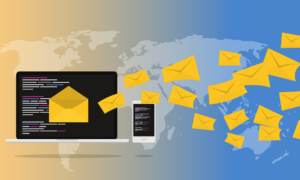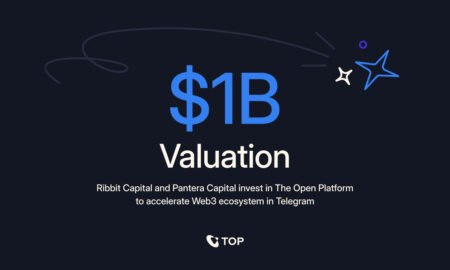So, you’re a digital marketer or running a business, trying to keep up in this super competitive online world. You’ve probably tried the usual, old-school email marketing tricks to build relationships with your leads and turn them into loyal customers. Sound familiar?
But the results have fallen short of your expectations.
- Your audience seems uninterested in your emails.
- Your teams can’t keep pace with the overwhelming requests for personalized emails.
- You find it cumbersome to send timely as well as relevant emails.
- Your engagement and conversion rates are nowhere near extraordinary.
By now, you’ve probably realized that if you continue this way, you will reach nowhere. Your competitors will sideline you very easily. And your dreams of taking your business to new heights will get shattered with the old-fashioned way.
That’s why you need some out-of-the-box strategy. Something that brings the best out of your email campaigns. You need email automation. That too in a way that nobody is using it for.
Can you imagine how cool it would be if you could convey the right message to the right person right when they needed it? Sounds pretty darn exciting, right? That’s the real power we’re talking about here!
So, if you’re ready to stay ahead of your competitors and leverage expected trends of the future, here is the Table of Contents we will go through.
- 6 Crucial future trends in email automation for lead nurturing
- How do we prepare for these trends in 2025?
- Wrapping up
If you want to learn more about the role of email automation in lead nurturing, here is a handy ebook that will help you excel.
By the end of this article, you will walk with your head held high and nurture your leads with email automation like never before.
Let’s dive right in.
6 Crucial future trends in email automation for lead nurturing
Here are a few trends expected to rise to the occasion in 2025 and beyond.
1. AI-driven personalization at a large scale
Artificial intelligence is paving the way for how email campaigns are made. Now, you can use AI-powered tools to create individual emails based on data and information about people, their preferences, and online behaviors.
Things are expected to go a step further.
- Hyper-targeting and hyper-personalization are expected to be more prevalent among marketers.
- These will help identify customer preferences on a more personal level with less effort.
- You will learn more about their purchase patterns, engagements with specific content on web pages, etc.
- For example, AI-powered tools like Klaviyo and HubSpot use predictive analytics and features to analyze user behavior. This advanced personalization and targeting will drive higher open rates and eventually lead to more conversions.
2. Dynamic content for personalized experiences
Dynamic content helps marketers create emails that adapt to each individual based on their preferences and interactions with your brand or website.
- You can send personalized greetings or product recommendations based on your potential customers’ browsing history.
- This dynamic content ensures you send relevant emails to each lead instead of generic emails.
- For example, personalized subject lines are expected to get more opens than non-personalized ones. The first name of each individual can be used as dynamic content in the subject line, making them feel valued and heard.
3. Integration with omnichannel marketing
Customers love to follow and engage with a brand across multiple channels. From social media to SMSs, they expect their favorite brands to speak to them. So, when you integrate email automation with omnichannel marketing, you can expect consistent brand messaging across all channels, including websites, emails, social media, etc.
- It will help you offer a comprehensive user experience to your leads.
- For example, AI-powered platforms like HubSpot and Mailchimp can synchronize email campaigns with social media ads, SMS alerts, push notifications, etc.
- This develops a cohesive journey for your leads and sends them through sales funnel.
4. Hyper-automation with AI chatbots and virtual assistants
AI-powered chatbots and virtual assistants are expected to go beyond their current capabilities.
- They can handle responses and send personalized follow-ups in response to each.
- For example, chatbots can directly answer customer queries from an email link.
- This offers instant support and engages your leads without making them wait for long hours.
- Also, virtual assistants can schedule your emails based on your audience’s behavior.
- They ensure your emails land at the right time to the right person and gain high engagement.
5. Voice and video emails
Voice notes and videos in emails are gaining more traction.
- Businesses are looking to shift more towards interactive and engaging content.
- They help in developing bonds and connections that develop trust with the users.
- For example, you can send a personalized video message to introduce a product or send voice messages to explain complex tasks.
6. Real-time event-triggered emails
Event-triggered emails are expected to create a huge difference in boosting conversion rates.
- These emails act as a response to user actions.
- They can help in sending timely emails and personalize them to be relevant to each individual.
- These triggers can be activated based on user actions such as cart abandonment, newsletter signup, post-purchase confirmation, etc.
How do we prepare for these trends in 2025?
Now, we’re asking the right questions. Here are a few advanced tips curated by experts to help us prepare for these future trends in email automation for lead nurturing.
- Learn to use AI and machine learning tools and technology without any further ado.
- Evaluate your current needs. Analyze a few top email platforms and pick one. Leverage predictive analytics and regularly monitor the performance of your campaigns to tweak and perfect them.
- You must collect data only after the user’s consent. Keep your focus on first-party data only.
- You should frequently segment your email list to create targeted campaigns.
- You must train your team to use new and advanced tools and stay ahead of the trends.
Wrapping up
To adapt to the future of email automation, companies must learn to implement AI tools, improve their data collection processes, and train their workers.
That way, your business can send more targeted, interesting, and legally compliant emails that effectively nurture your leads into real customers.
The digital marketing environment is highly competitive, but now is the time to start preparing for tomorrow so businesses can sustain future growth. Create your action plan today.
Read More From Techbullion



































